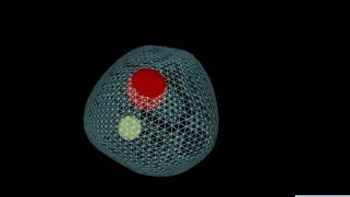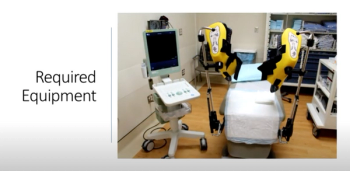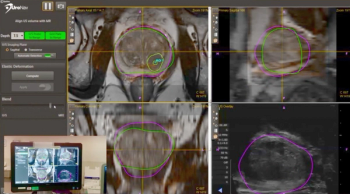
Clinical Trial Data for the Treatment of nmCRPC
Episodes in this series

[Transcript]
Raoul Concepcion, MD, FACS: In this next segment, we are going to-let’s just review the progression of patients. Again, I am a big stickler moving forward, not even just for advanced prostate cancer but even for localized prostate cancer. Especially as urologists, we need to be talking about risk stratification-very low risk, low risk, favorable, intermediate, etc. But clearly, as we move into this advancing patient, of metastatic, nonmetastatic patients, to be able to identify these patients, understand the clinical trials that have gone into the “standard of care” for these patients I think is critically important.
We’ve talked about these 2 buckets of castration-sensitive patients. Now let’s move into an area that really started all this back in 2010, which is this concept of castration-resistant prostate cancer. Again, these are patients who historically we spoke of as hormone resistant and androgen insensitive. We’ve adopted this terminology of castration-resistant prostate cancer, understanding that these patients-despite castration levels of testosterone-will progress, and they will progress with rising PSAs [prostate-specific antigens].
To me, castration-resistant prostate cancer has a straightforward definition. It’s a patient with an ICD-10 [International Classification of Diseases, Tenth Revision] code of prostate cancer. They’re on an androgen deprivation therapy [ADT], whether LHRH analogues or bilateral orchiectomy. They have a rising PSA, generally by clinical trial, at least 2 or 3 consecutive rises taken on or 2 weeks apart.
And now, depending upon that, are they nonmetastatic or metastatic? Let’s first talk about, I think this is an arbitrary definition of nonmetastatic castration-resistant prostate cancer. These are patients who are on ADT. We know their testosterone is in the castration range. Their PSAs are going up, but with traditional imaging; traditional imaging being defined as bone scan, technetium-based bone scan and CT [computed tomography]. We’ll talk a little about the utilization of next-generation imaging and biomolecular scans. Gordon, walk us through the current trials that have brought various agents, which have really taken place over the past couple of years for this nonmetastatic castration-resistant prostate cancer patient.
Gordon Brown, MD: Thank you, Raoul. It’s an interesting topic. You did a great job outlining the disease state, understanding where we are in that patient with a testosterone of less than 50 [ng/dL] with a rising PSA and negative traditional imaging by CT scan and bone scan. As urologists, historically we really have had a dearth of therapeutic options. We really haven’t had anything to offer these patients. We basically had to watch them, or we’ve given them therapies that we know have been less than effective over time, waited till they developed metastatic disease, and now, you know, treated them in a landscape of new novel hormonal agents or sent them to medical oncology colleagues for Taxotere.
We do know, however, what the natural history of this disease is, trying to identify those patients at highest risk of progression based on the historical work of Matt Smith and Fred Saad looking at something called PSA doubling time. We know that those patients who have rapid PSA doubling times, defined usually as inside of 10 months, are at the highest risk for both metastasis as well as death from their disease.
These trials really focus on those patients who are at highest risk of disease progression and subsequently death from their disease and trying to really to modify the natural history of that disease. There have been 3 recently published trials. The first was the SPARTAN trial, which was utilizing apalutamide in patients who had castration-resistant nonmetastatic prostate cancer. I think we should note that all these look at PS [performance status] as conclusion criteria, PSA doubling times inside of 10 months. All of them have ECOG performance status of 0 or 1. All of them are nonmetastatic by traditional imaging. And they all use MFS [metastasis-free survival] as their primary endpoint, for metastasis-free survival.
Which for us, as urologists, is really the first time we’re seeing this commonly utilized in our literature to define end point for a clinical trial defining efficacy. We’re really utilizing that as a surrogate for overall survival based on the ICECaP [Intermediate Clinical Endpoints in Cancer of the Prostate] data.
From the SPARTAN trial, what we’ve seen is an improvement in metastasis-free survival of about 24 months and a reduction in risk of disease progression over time.
In the PROSPER trial what we’ve seen is an improvement in metastasis-free survival by about 22 months with the use of enzalutamide in patients with high-risk castration-resistant nonmetastatic prostate cancer. And most recently we have a report from the ARAMIS data that looks at the use of darolutamide, or Nubeqa, in the same patient population, showing a similar improvement in metastasis-free survival, about 22 months in patients at high-risk for progression of their disease.
This data, and it’s collected, suggest that we have to look for these patients within our practices. Right now we have data that really suggest that we could potentially extend the disease state over time and delay progression of disease. There may be implications with overall survival benefit, which are not mature yet. But now the burden rests on us in our advanced prostate cancer clinic to actively find these patients in our practice.
Raoul Concepcion, MD, FACS: Basically, in all these trials, these were nonmetastatic patients. To get into the trial, I think it’s important for the viewer to understand that, because this is where I think trial design and understanding trial design is very important when it comes time to clinically treat these patients. Correct me if I’m wrong, but pretty much for all 3 of these trials, to get in you had to be on ADP. You had to have a negative bone scan and CT. You had to have a PSA doubling time of less than 10 months. You had to have an absolute PSA value, though, of greater than 2, right?
Gordon Brown, MD: Correct.
Raoul Concepcion, MD, FACS: I think that, as you summarized very nicely, all 3 trials, although we can’t cross-compare trials, pretty much all of them showed with any of these androgen receptor blockers that there was clearly a benefit.
Panelists:
- Raoul Concepcion, MD, FACS, Vanderbilt University School of Medicine, Nashville, Tennessee
- Jahan Aghalar, MD, Board-certified Hematologist and Oncologist, New York, New York
- Gordon Brown, MD, Rowan University School of Osteopathic Medicine, Glassboro, New Jersey
- Jorge Garcia, MD, Cleveland Clinic, Cleveland, Ohio; Jonathan Henderson, MD, Regional Urologist, Shreveport, Louisiana
- Paul Sieber, MD, Penn Medicine Lancaster General Hospital, WellSpan Ephrata Community Hospital, Lancaster, Pennsylvania
Newsletter
Stay current with the latest urology news and practice-changing insights — sign up now for the essential updates every urologist needs.































